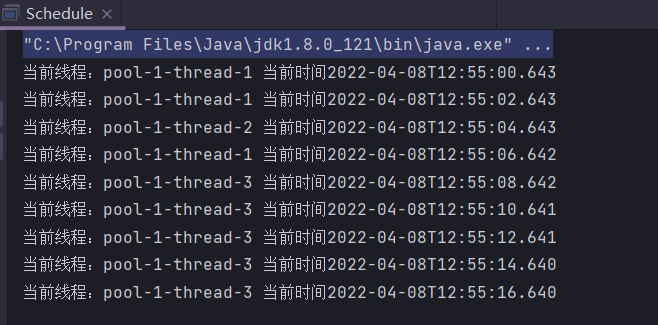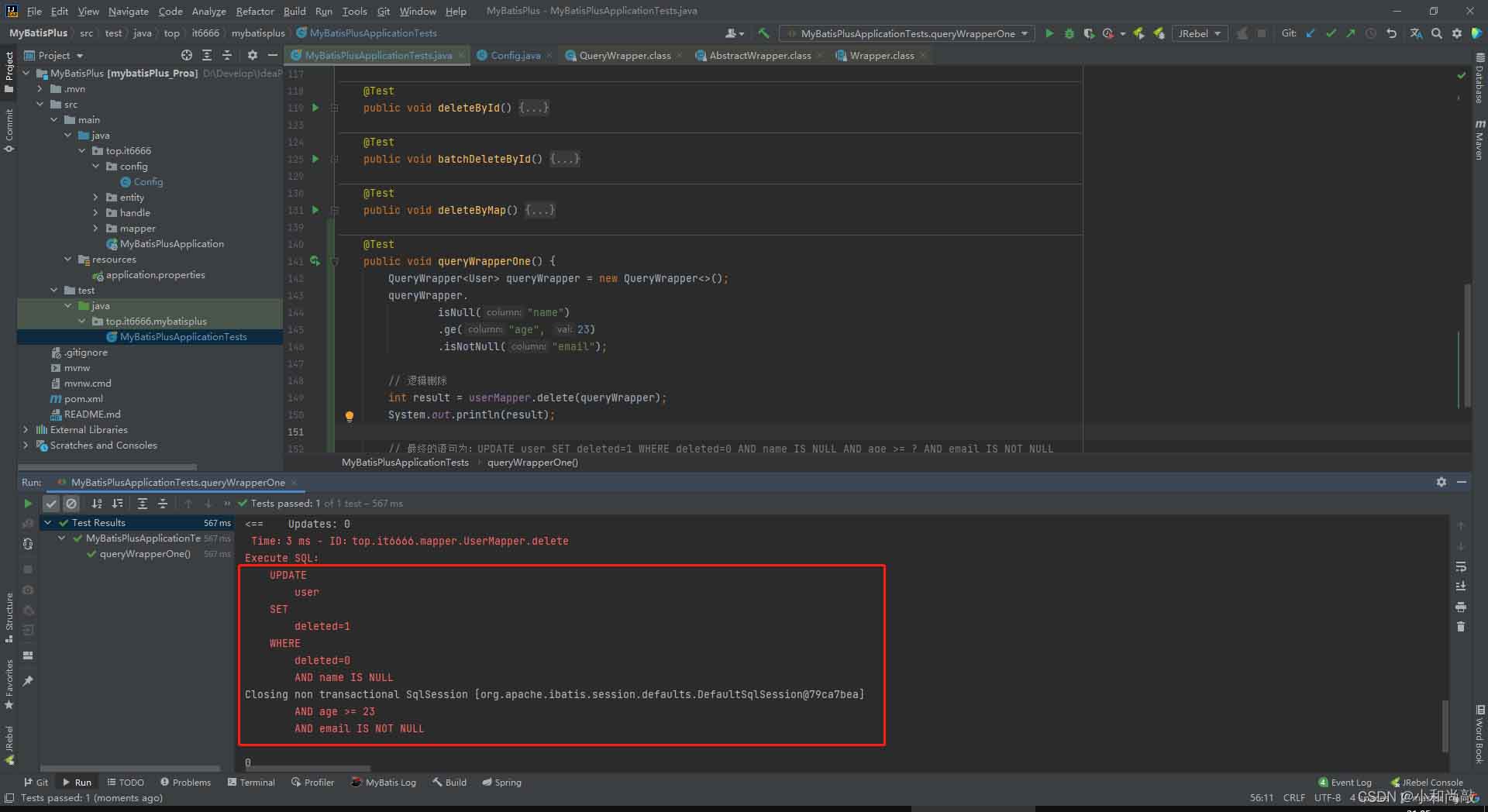本文主要介绍了springboot集成本地缓存Caffeine的三种使用方式,文中通过示例代码介绍的非常详细,对大家的学习或者工作具有一定的参考学习价值,需要的朋友们下面随着小编来一起学习学习吧
第一种方式(只使用Caffeine)
gradle添加依赖
dependencies {
implementation 'org.springframework.boot:spring-boot-starter-jdbc'
implementation 'org.springframework.boot:spring-boot-starter-thymeleaf'
implementation 'org.springframework.boot:spring-boot-starter-web'
implementation 'org.mybatis.spring.boot:mybatis-spring-boot-starter:2.1.3'
runtimeOnly 'mysql:mysql-connector-java'
compileOnly 'org.projectlombok:lombok'
annotationProcessor 'org.projectlombok:lombok'
testImplementation('org.springframework.boot:spring-boot-starter-test') {
exclude group: 'org.junit.vintage', module: 'junit-vintage-engine'
}
compile group: 'com.github.ben-manes.caffeine', name: 'caffeine', version: '2.8.4'
// compile('org.springframework.boot:spring-boot-starter-cache')
}
编写配置类
package org.example.base.config;
import com.github.benmanes.caffeine.cache.Cache;
import com.github.benmanes.caffeine.cache.Caffeine;
import org.springframework.context.annotation.Bean;
import org.springframework.context.annotation.Configuration;
import java.util.concurrent.TimeUnit;
/**
* @author l
* @date Created in 2020/10/27 11:05
*/
@Configuration
//@EnableCaching
public class CacheConfig {
@Bean(value = "caffeineCache")
public Cache<String, Object> caffeineCache() {
return Caffeine.newBuilder()
// 设置最后一次写入或访问后经过固定时间过期
.expireAfterWrite(60, TimeUnit.SECONDS)
// 初始的缓存空间大小
.initialCapacity(1000)
// 缓存的最大条数
.maximumSize(10000)
.build();
}
@Bean(value = "caffeineCache2")
public Cache<String, Object> caffeineCache2() {
return Caffeine.newBuilder()
// 设置最后一次写入或访问后经过固定时间过期
.expireAfterWrite(120, TimeUnit.SECONDS)
// 初始的缓存空间大小
.initialCapacity(1000)
// 缓存的最大条数
.maximumSize(10000)
.build();
}
}
测试
package org.example.base;
import com.github.benmanes.caffeine.cache.Cache;
import org.example.base.bean.User;
import org.junit.jupiter.api.Test;
import org.springframework.beans.factory.annotation.Autowired;
import org.springframework.beans.factory.annotation.Qualifier;
import org.springframework.boot.test.context.SpringBootTest;
@SpringBootTest
class BaseApplicationTests {
@Qualifier("caffeineCache")
@Autowired
Cache<String, Object> cache;
@Qualifier("caffeineCache2")
@Autowired
Cache<String, Object> cache2;
@Test
public void test() {
User user = new User(1, "张三", 18);
cache.put("123", user);
User user1 = (User) cache.getIfPresent("123");
assert user1 != null;
System.out.println(user1.toString());
User user2 = (User) cache2.getIfPresent("1234");
System.out.println(user2 == null);
}
}输出

第二种方式(使用Caffeine和spring cache)
gradle添加依赖
dependencies {
implementation 'org.springframework.boot:spring-boot-starter-jdbc'
implementation 'org.springframework.boot:spring-boot-starter-thymeleaf'
implementation 'org.springframework.boot:spring-boot-starter-web'
implementation 'org.mybatis.spring.boot:mybatis-spring-boot-starter:2.1.3'
runtimeOnly 'mysql:mysql-connector-java'
compileOnly 'org.projectlombok:lombok'
annotationProcessor 'org.projectlombok:lombok'
testImplementation('org.springframework.boot:spring-boot-starter-test') {
exclude group: 'org.junit.vintage', module: 'junit-vintage-engine'
}
compile group: 'com.github.ben-manes.caffeine', name: 'caffeine', version: '2.8.4'
compile('org.springframework.boot:spring-boot-starter-cache')
}
编写配置类
package org.example.base.config;
import com.github.benmanes.caffeine.cache.Caffeine;
import org.springframework.cache.CacheManager;
import org.springframework.cache.annotation.EnableCaching;
import org.springframework.cache.caffeine.CaffeineCache;
import org.springframework.cache.support.SimpleCacheManager;
import org.springframework.context.annotation.Bean;
import org.springframework.context.annotation.Configuration;
import java.time.Duration;
import java.util.ArrayList;
/**
* @author l
* @date Created in 2020/10/27 11:05
*/
@Configuration
@EnableCaching
public class CacheConfig {
public enum CacheEnum {
/**
* @date 16:34 2020/10/27
* 第一个cache
**/
FIRST_CACHE(300, 20000, 300),
/**
* @date 16:35 2020/10/27
* 第二个cache
**/
SECOND_CACHE(60, 10000, 200);
private int second;
private long maxSize;
private int initSize;
CacheEnum(int second, long maxSize, int initSize) {
this.second = second;
this.maxSize = maxSize;
this.initSize = initSize;
}
}
@Bean("caffeineCacheManager")
public CacheManager cacheManager() {
SimpleCacheManager cacheManager = new SimpleCacheManager();
ArrayList<CaffeineCache> caffeineCaches = new ArrayList<>();
for (CacheEnum cacheEnum : CacheEnum.values()) {
caffeineCaches.add(new CaffeineCache(cacheEnum.name(),
Caffeine.newBuilder().expireAfterWrite(Duration.ofSeconds(cacheEnum.second))
.initialCapacity(cacheEnum.initSize)
.maximumSize(cacheEnum.maxSize).build()));
}
cacheManager.setCaches(caffeineCaches);
return cacheManager;
}
// @Bean("FIRST_CACHE")
// public Cache firstCache(CacheManager cacheManager) {
// return cacheManager.getCache("FIRST_CACHE");
// }
//
// @Bean("SECOND_CACHE")
// public Cache secondCache(CacheManager cacheManager) {
// return cacheManager.getCache("SECOND_CACHE");
// }
}
编写service层
package org.example.base;
import org.example.base.bean.User;
import org.example.base.service.UserService;
import org.junit.jupiter.api.Test;
import org.springframework.beans.factory.annotation.Autowired;
import org.springframework.boot.test.context.SpringBootTest;
@SpringBootTest
class BaseApplicationTests {
@Autowired
private UserService userService;
@Test
public void test() {
User user = new User(123,"jack l",18);
userService.setUser(user);
System.out.println(userService.getUser("123"));
}
}
测试
package org.example.base;
import org.example.base.bean.User;
import org.example.base.service.UserService;
import org.junit.jupiter.api.Test;
import org.springframework.beans.factory.annotation.Autowired;
import org.springframework.boot.test.context.SpringBootTest;
@SpringBootTest
class BaseApplicationTests {
@Autowired
private UserService userService;
@Test
public void test() {
User user = new User(123,"jack l",18);
userService.setUser(user);
System.out.println(userService.getUser("123"));
}
}
输出结果

第三种方式(使用Caffeine和spring cache)
- gradle依赖添加同方式二
- 配置类添加方式同方式二
- 编写service层
package org.example.base.service.impl;
import org.example.base.bean.User;
import org.example.base.service.UserService;
import org.springframework.cache.annotation.CacheConfig;
import org.springframework.cache.annotation.CacheEvict;
import org.springframework.cache.annotation.CachePut;
import org.springframework.cache.annotation.Cacheable;
import org.springframework.stereotype.Service;
/**
* @author l
* @date Created in 2020/10/23 14:47
*/
@Service
//@CacheConfig(cacheNames = "SECOND_CACHE",cacheManager = "caffeineCacheManager")
public class UserServiceImpl implements UserService {
/**
* 使用@CachePut注解的方法,一定要有返回值,该注解声明的方法缓存的是方法的返回结果。
* it always causes the
* method to be invoked and its result to be stored in the associated cache
**/
@Override
@CachePut(key = "#user.getId()", value = "SECOND_CACHE", cacheManager = "caffeineCacheManager")
public User setUser(User user) {
System.out.println("已经存储进缓存了");
return user;
}
@Override
@CacheEvict(value = "SECOND_CACHE",cacheManager = "caffeineCacheManager")
public void deleteUser(Integer id) {
System.out.println("缓存删除了");
}
@Override
@Cacheable(key = "#id", value = "SECOND_CACHE", cacheManager = "caffeineCacheManager")
public User getUser(Integer id) {
System.out.println("从数据库取值");
//模拟数据库中的数据
return null;
}
}
测试
package org.example.base;
import org.example.base.bean.User;
import org.example.base.service.UserService;
import org.junit.jupiter.api.Test;
import org.springframework.beans.factory.annotation.Autowired;
import org.springframework.boot.test.context.SpringBootTest;
@SpringBootTest
class BaseApplicationTests {
@Autowired
private UserService userService;
@Test
public void test4(){
User user1 = new User(123, "jack l", 18);
userService.setUser(user1);
System.out.println("从缓存中获取 "+userService.getUser(123));
System.out.println(userService.getUser(123322222));
userService.deleteUser(123);
System.out.println(userService.getUser(123));
}
}
输出结果

到此这篇关于springboot集成本地缓存Caffeine的三种使用方式(小结)的文章就介绍到这了,更多相关springboot集成本地缓存Caffeine内容请搜索编程学习网以前的文章希望大家以后多多支持编程学习网!
沃梦达教程
本文标题为:springboot集成本地缓存Caffeine的三种使用方式(小结)


猜你喜欢
- Spring Security权限想要细化到按钮实现示例 2023-03-07
- Java中的日期时间处理及格式化处理 2023-04-18
- Springboot整合minio实现文件服务的教程详解 2022-12-03
- 深入了解Spring的事务传播机制 2023-06-02
- Java实现顺序表的操作详解 2023-05-19
- 基于Java Agent的premain方式实现方法耗时监控问题 2023-06-17
- JSP页面间传值问题实例简析 2023-08-03
- JSP 制作验证码的实例详解 2023-07-30
- SpringBoot使用thymeleaf实现一个前端表格方法详解 2023-06-06
- ExecutorService Callable Future多线程返回结果原理解析 2023-06-01









